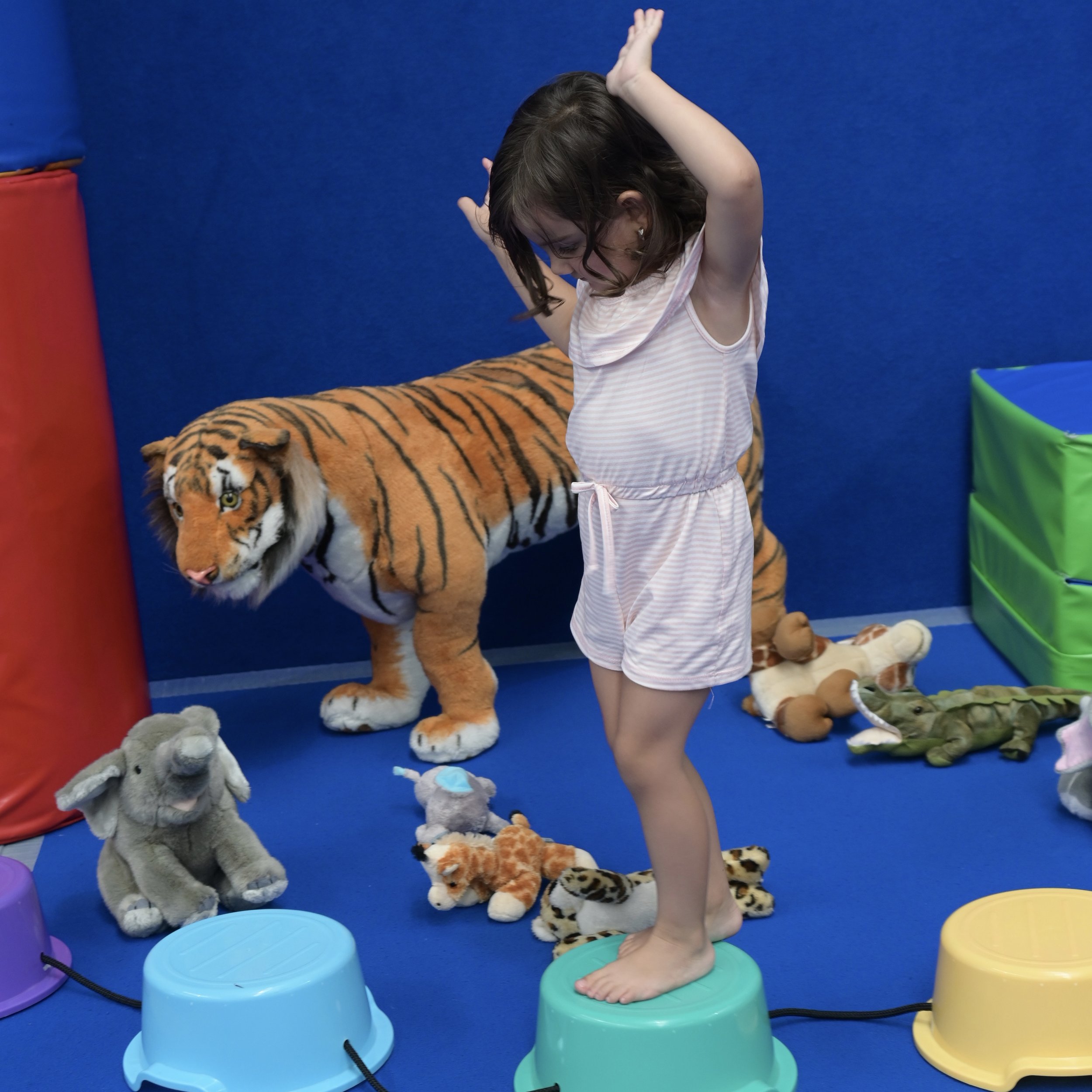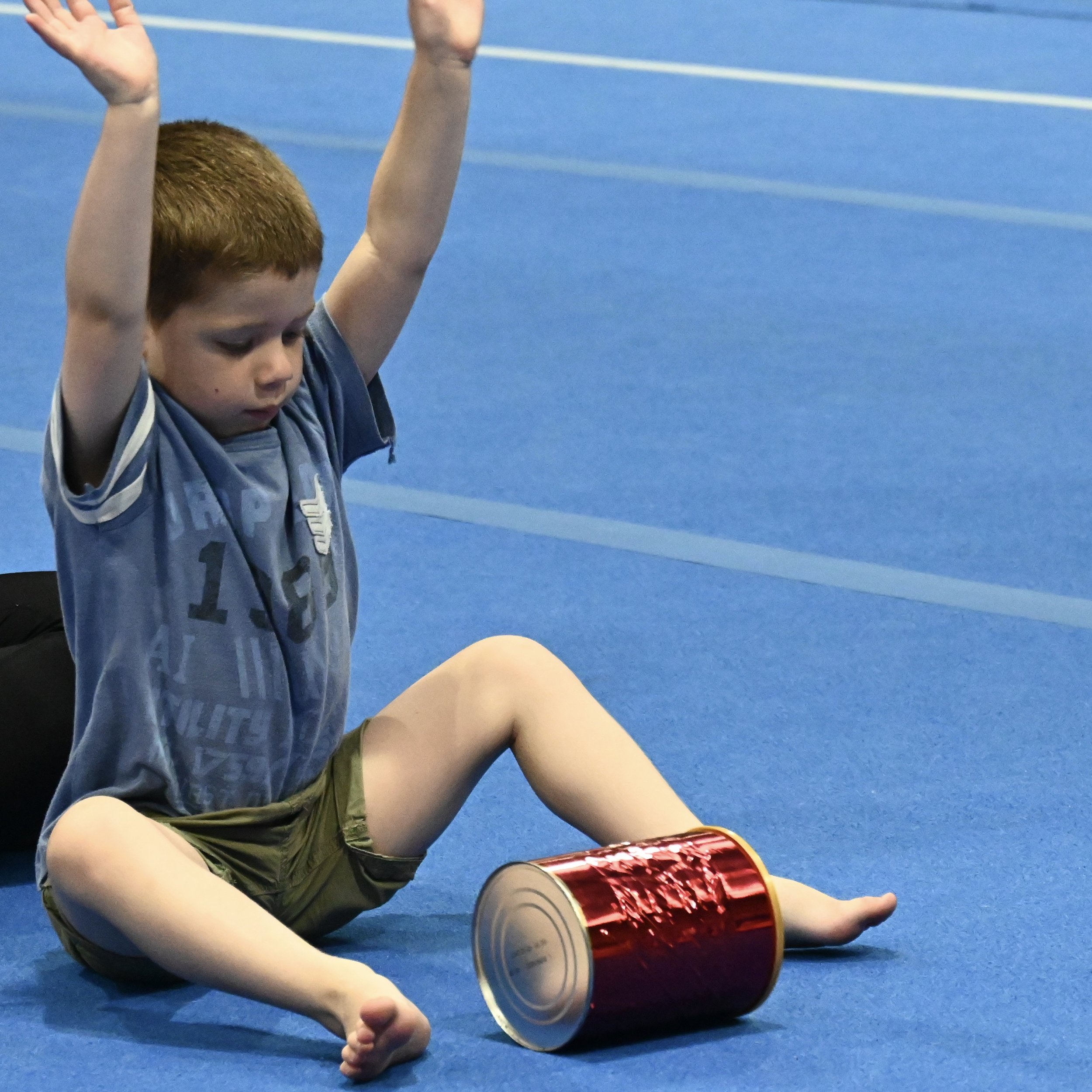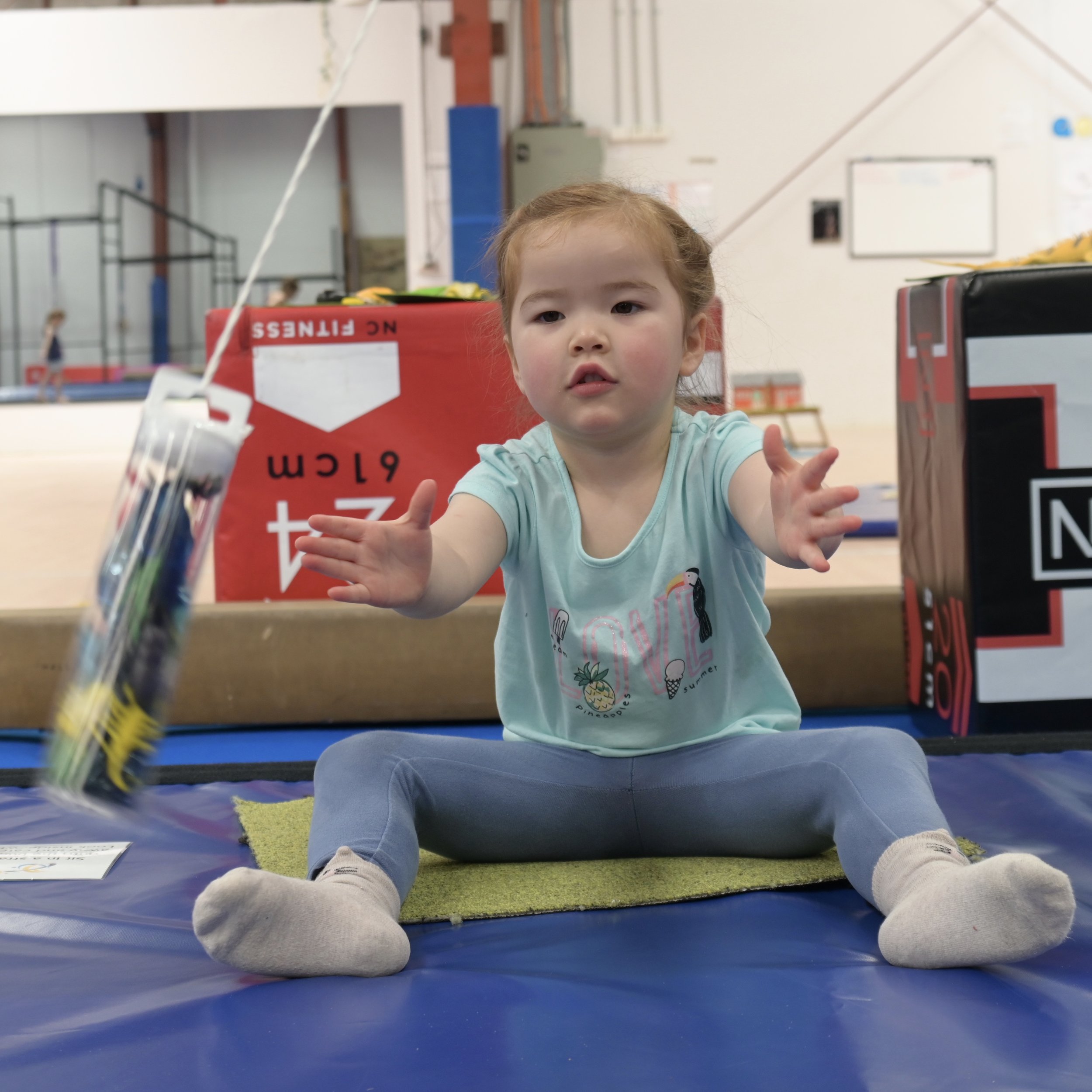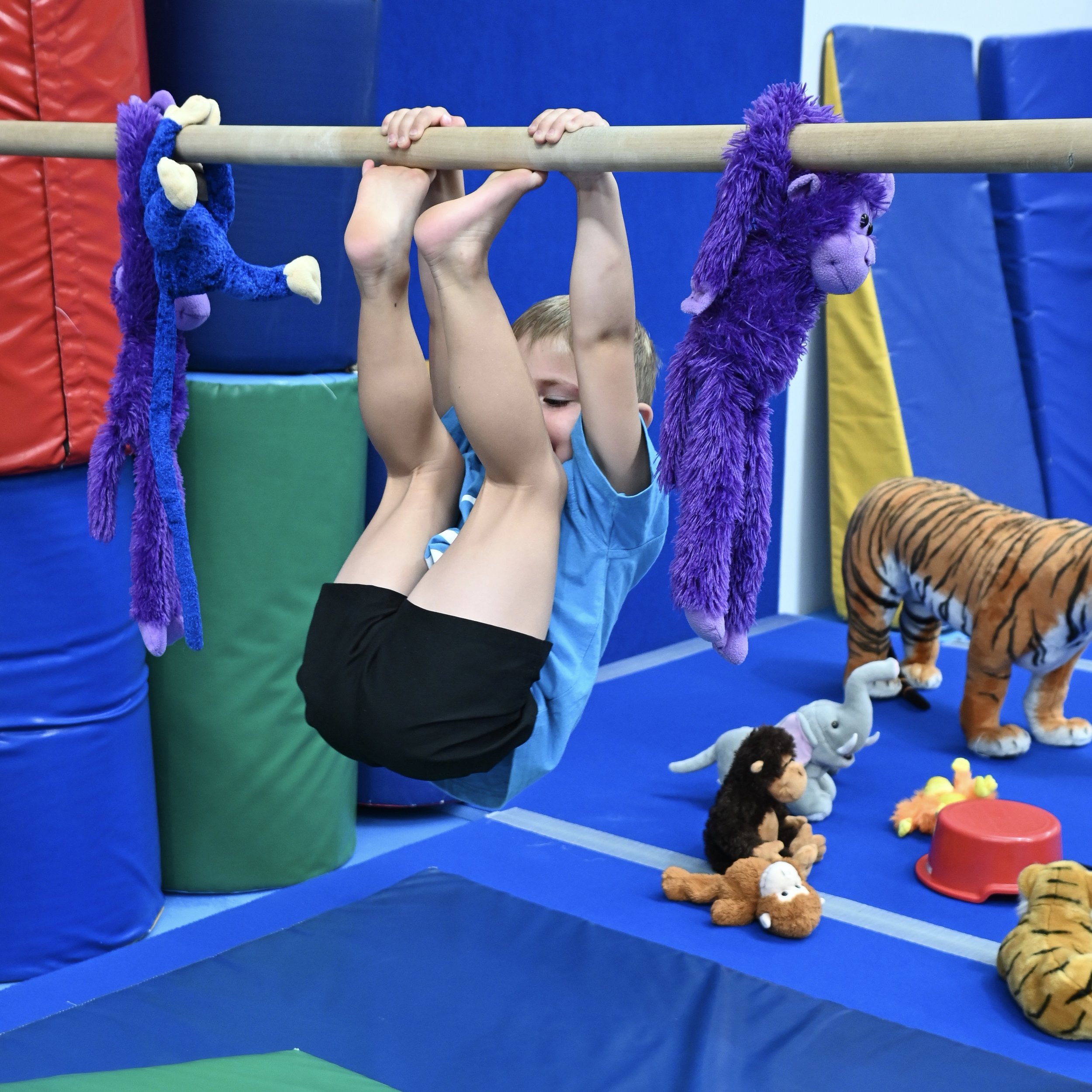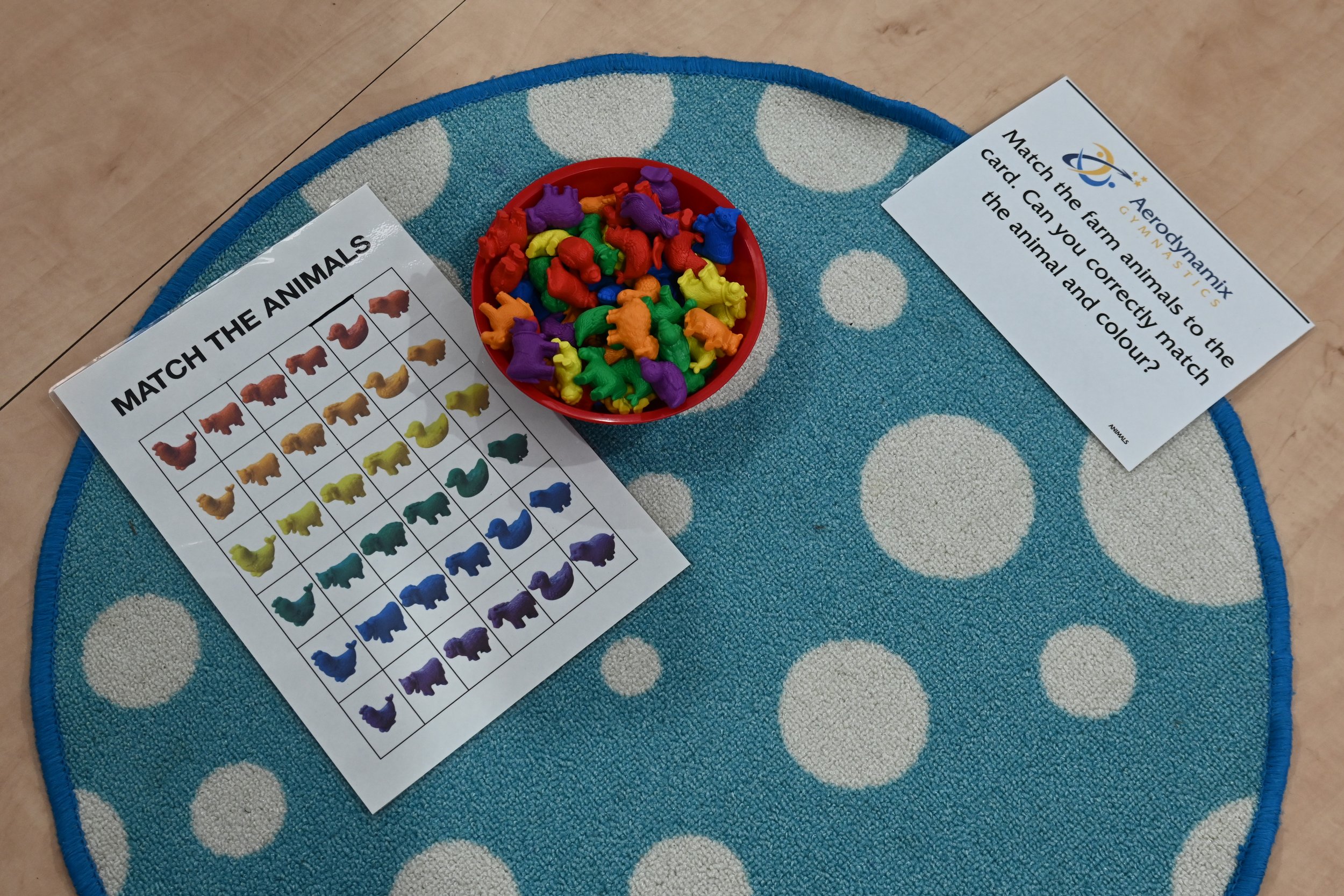Leaping lizards, it’s time to party with animals!
What animal pops into your mind as a favourite? A stealthy tiger? A slithering snake? A galloping horse? By replicating the animal world in the gym, we are helping each child become curious about all the different ways they can move, helping them develop gross motor skills whilst keeping the aspect of play present.
We had a blast with our Animals theme at Kindergym!
Discover the Set Up
During this theme we spent time on the beams, floor and rings & ropes.
Crawling down low or looking up high… there were lots of creepy crawlies in the beam zone! We took a close up look at some of our tiniest critters while balancing along the low beam. Stopping to look at the colours and patterns helped the children to slow down and find their balance 🐜🐞 Watch out for those spiders! It was a tricky task to traverse the spider web without getting stuck in the web, but it encouraged the children to problem solve and persevere. Then, on the benches, we practised wriggling like a caterpillar by using our arm muscles to slide along the tree trunk on our tummy 🐛
Our bars area was transformed into a jungle adventure! 🐵🐾🐍 Starting on the swings, we flew through the sky among the toucans, feeling the wind in our hair. We tried hard to coordinate our legs with the swinging motion to soar up as high as the birds! The other bars had plenty of swinging and hanging challenges and following the trail of the snake was a favourite. At the end of the circuit, we climbed up the mountain and found a tiger's cave 🐯 Staying nice and quiet, we crept across the top of the cave and then slid down the other side before the tiger woke up - phew!
The red floor is where we found our favourite farm animals! We splashed and rolled in the warm mud at the pig pen 🐷, then we rounded up the sheep and took a ride on a horse. When we crawled through the chicken coop… we even found a few fresh eggs 🐣 What a time we had at the farm!
The Animal Kingdom & DMPs
Stomp, roll, climb. Swing, jump, run. There are lots of way to move and all of them are fun! Children are natural imitators - it’s one of their favourite ways to learn - and when they imitate animals, they get quite a workout! We managed a full range of movement by linking our circuit activities to the animal kingdom and we had so much fun that we almost forgot how much we were learning!
At gymnastics, it’s no surprise that movement motivates us, so having animals around us is always exciting. Behind the scenes, our Kindergym leaders spend time and take care to develop lessons plans that offer a broad movement experience, which helps children to build a strong physical literacy foundation. When we plan our gross motor movement activities, we build stations around Dominant Movement Patterns (DMPs). Using this approach ensures a well balanced fitness and skill building experience and, as a bonus, creates variety. It’s that variety that helps gymnastics appeal to every child and makes the gym a special place to grow up!
What exactly are DMPs? DMPs are a group of six key movement experiences that have been identified as the pillars of gross (large) movement. They are a key feature of future skills and are present across a multitude of sports.
1. Spring: Using two feet or one, springing from hands, or even alternating springing from hands and feet, springing activities often use fast twitch muscle fibres and develops muscular strength and power. Children love springing and jumping, so trampolines are always a popular station in the gym.
2. Landing: Landings are a key focus of gymnastics and we learn to safely control a descent from a height at an early age. We learn that it is important to absorb the impact of a landing and that different types of landings keep us safe and in control. This is a skill that is as useful in sport as it is in everyday life. Having the confidence to stay balanced and in control of a landing, or to manage a fall or stumble with a safety roll can save us from injury.
3. Swing: Bars and rings give us the chance to develop upper body strength through swinging and hanging activities, however the beauty of swinging is that it feels like play. The grip required for hanging also builds endurance in the hand, which is required for writing. Swinging can also be undertaken in support (with shoulders above the hands) and advanced swing techniques can incorporate rotation!
4. Rotation: Forward, backwards or sideways - rotation activities, including rolls and spins, help us to create a sense of our body in space by stimulating our vestibular system and improving balance and coordination. The confidence to roll starts at floor level, but a gymnastics journey can take that roll to higher places. Rotations with flight and height are a common gymnastic goal!
5. Locomotion: Locomotion is considered any method of travel that gets us from one place to another. As babies, we first learnt to roll to get on the move before progressing to crawling on all fours and, finally, transferring weight to our feet to walk and run. Locomotion can develop endurance, but also speed and agility. It can develop strength, but also flexibility and it offers a creative outlet that underpins the joy of gymnastics!
6. Static: Static shapes are held positions. They provide important corner stones to technique development and also create a unique opportunity to develop isometric strength (the ability to contract a muscle without any movement in the surrounding joint). For children who are always on the go, learning gymnastics shapes is also a great way for them to practise slowing down and being still. Examples are a tuck shape, star shape and front support. Taught early, these foundation elements become second nature and make future skill development so much easier!
By replicating movements in the animal world, we have been able to cover all of these important DMPs, in a creative and fun environment.
Gym kids are Smart Kids
We love talking about animals because they give us so many opportunities to learn. Beyond movement, animals nurture a special curiosity in children that creates an open ended learning experience at Kindergym. Grouping animal by type, as we do in our apparatus areas, starts conversations and budding scientists love listening to facts that help them to identify and classify animal types: “Did you know that all insects have 6 legs?” These preliminary introductions to key concepts help children to explore meaningfully and develop their own interest in what else animals have in common. Enjoy the time you spend with your children on these conversations - you never know where they will lead!





















